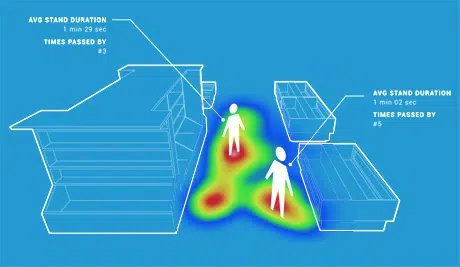
Supermarket giant Carrefour and convenience store group Nisa are piloting a new technology that uses Bluetooth Low Energy (BLE) beacons attached to trolleys and baskets to track a shopper’s journey around the store.
Three Carrefour locations in Madrid are participating in the trial along with three Nisa stores in London.
The beacons on the shopping trolleys and baskets work in conjunction with sensors attached to the ceiling of the store that pick up the signals emitted. Location data collected by the sensors is then fed to a cloud-based server for analysis.
Merchants are then provided with data on how shoppers move around their store, including their overall time in the store and how long they spend in particular product aisles. Data is currently collected anonymously but an app that would enable location data to be tied to an individual customer is due to be added in the future.
Adding the beacons to trolleys and baskets means that consumers do not need an app — or even a mobile phone — to be tracked by the system, developer Proximus has told NFC World+. The aim, CEO Jorge Bueno explained, was “to try to give something to the market that didn’t require any customer interaction”.
“The solutions you find out there in the market today are either based on a WiFi signal, so you need the consumer to have their WiFi on, or iBeacons which are very popular nowadays.
“But with an iBeacon solution, you need the consumer to download an app and use that app, and that is quite a difficult thing to do. We wanted to be completely independent from all of the interaction with the customer so the customer doesn’t have to do anything to change their habits. Changing the habits of a customer is very, very hard so we tried to adapt our technology to that there is zero customer interaction, a 100% rate of valuable information.
“Of course, the technology is completely compatible with the smartphone so, in the near future, a brand could integrate it with their loyalty card that is stored on the smartphone for instance but, to begin, we wanted to be completely independent of them so consumers stay anonymous throughout their journey. We want to understand what their behaviour is and the flow of the people inside the store. We don’t necessarily need to know who they are.”
“It is really simple; we don’t need any kind of integration with the point of sale because we know where the POS systems are in the store and we know where the trolleys and the baskets are,” Bueno continued.
“If anyone wants to use our technology, we provide them with all of the chips that they have to install on the trolleys and baskets and, right now, we are doing that ourselves so we send some people there to install them.
“We also install the sensors on the ceiling and give them access to our platform, our dashboard, so that, from the very first moment, merchants can start understanding the flow of what is happening inside their store.”
Next: Visit the NFCW Expo to find new suppliers and solutions
Carrefour is the next Google? #OMG